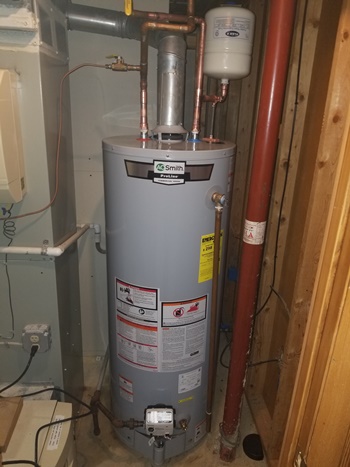Step-by-Step Steps to Maintaining Your Home's Hot Water System
Step-by-Step Steps to Maintaining Your Home's Hot Water System
Blog Article
We have unearthed this great article involving How to Maintain a Hot Water Heater in a Few Simple Steps directly below on the web and decided it made perfect sense to quickly share it with you over here.

Warm water is essential for everyday convenience, whether it's for a refreshing shower or cleaning dishes. To ensure your warm water system runs efficiently and lasts much longer, regular upkeep is key. This post gives practical ideas and understandings on how to keep your home's hot water system to prevent disturbances and expensive fixings.
Intro
Maintaining your home's warm water system might seem overwhelming, yet with a few easy actions, you can ensure it operates efficiently for several years to come. This overview covers every little thing from understanding your hot water system to do it yourself upkeep suggestions and understanding when to employ expert help.
Significance of Maintaining Your Hot Water System
Normal upkeep not just prolongs the life expectancy of your hot water system yet additionally guarantees it operates effectively. Overlooking maintenance can bring about lowered effectiveness, higher energy bills, and also early failure of the system.
Signs Your Warm Water System Requirements Maintenance
Knowing when your warm water system requires attention can prevent significant problems. Watch out for signs such as irregular water temperature level, strange sounds from the heating system, or corroded water.
Recognizing Your Warm Water System
Before diving into maintenance tasks, it's helpful to recognize the standard parts of your warm water system. Usually, this includes the hot water heater itself, pipelines, anode poles, and temperature controls.
Monthly Maintenance Tasks
Normal month-to-month checks can assist catch minor concerns prior to they intensify.
Flushing the Water Heater
Purging your hot water heater eliminates sediment build-up, boosting efficiency and lengthening its life.
Checking and Replacing Anode Rods
Anode poles stop rust inside the tank. Checking and replacing them when worn out is critical.
Examining and Adjusting Temperature Level Settings
Adjusting the temperature level settings ensures optimum efficiency and safety.
Do It Yourself Tips for Maintenance
You can perform numerous maintenance tasks on your own to keep your warm water system in top condition.
Looking for Leaks
Regularly check pipes and links for leaks, as these can lead to water damages and higher costs.
Evaluating Stress Alleviation Valves
Testing the stress relief valve guarantees it functions appropriately and avoids too much stress buildup.
Protecting Pipes
Protecting hot water pipelines reduces warm loss and can save energy.
When to Call an Expert
While DIY maintenance is valuable, some problems call for expert expertise.
Complicated Issues Needing Professional Assistance
Instances include significant leakages, electrical troubles, or if your water heater is regularly underperforming.
Routine Specialist Maintenance Perks
Professional maintenance can consist of thorough evaluations, tune-ups, and making sure conformity with safety requirements.
Verdict
Normal maintenance of your home's warm water system is vital for effectiveness, longevity, and expense financial savings. By following these ideas and understanding when to seek expert aid, you can ensure a reliable supply of hot water without unforeseen interruptions.
How to Maintain an Instant Hot Water Heater
Before tinkering with your hot water heater, make sure that it’s not powered on. You also have to turn off the main circuit breaker and shut off the main gas line to prevent accidents. Also turn off the water valves connected to your unit to prevent water from flowing into and out of the appliance. 2. When you’re done, you have to detach the purge valves’ caps. These look like the letter “T†and are situated on either side of the water valves. Doing so will release any pressure that has accumulated inside the valves while at the same time avoid hot water from shooting out and burning your skin. 3. When the purge valves’ caps are removed, you have to connect your hosing lines to the valves. Your unit should have come with three hoses but if it didn’t, you can purchase these things from any hardware or home repair shops. You can also get them from retail stores that sell water heating systems. Read the user’s manual and follow it to complete this task properly. When the hosing lines are connected, open the purge port’s valves. 4. You should never use harsh chemical cleaners or solutions when cleaning your unit. Make use of white vinegar instead. It should be undiluted and you’ll probably use about 2 gallons. 5. Now flush your water heater. This task should probably take about 40 minutes. We can’t give you specific directions for this because the procedure is carried out depending on the type, model and brand of your heater. With that being said, refer to the user’s manual. 6. When you’re done draining the unit, you have to turn off the purge port valves again. Remove the hosing lines that you earlier installed on each of the water valves. Put the valve caps (purge port) back in their respective places and be very careful so as not to damage the rubber discs that are found inside these caps. 7. Now that everything’s back in place, check your user’s manual again to find out how to reactivate your water heating system. 8. Once it is working, turn one of your hot water faucets on just to let air pass through the heater’s water supply pipes. Leave the tap on until water flows smoothly out of it. https://www.orrplumbing.com/blog/2014/september/how-to-maintain-an-instant-hot-water-heater/

I was made aware of that article on How to Maintain Your Water Heater & Prolong its Life through a good friend on a different web property. If you please pause to distribute this entry if you enjoyed it. I cherish reading our article about What Kind of Maintenance Do Water Heaters Need?.
Request An Appointment Report this page